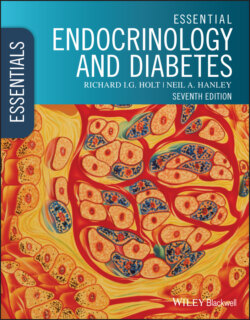Читать книгу Essential Endocrinology and Diabetes - Richard I. G. Holt - Страница 96
Cell and molecular biology as diagnostic tools Karyotype
ОглавлениеKaryotype refers to the number and microscopic appearance of chromosomes arrested at metaphase (Chapter 2). The word also describes the complement of chromosomes within an individual’s cells, i.e. the normal karyotype for females is 46,XX and for males is 46,XY. A karyogram is the reorganized depiction of metaphase chromosomes as pairs in ascending number order. An abnormal total number of chromosomes is called aneuploidy (common in malignant tumours). More detail comes from Giemsa (G) staining of metaphase chromosomes, where each chromosome can be identified by its particular staining pattern, called ‘G‐banding’.
Ascertaining the karyotype can be useful in congenital endocrinopathy, such as genital ambiguity (i.e. is it 46,XX or 46,XY?), or if there is concern over Turner syndrome (45,XO) or Klinefelter syndrome (47,XXY) (Chapter 7). G‐banding allows experienced cytogeneticists to resolve chromosomal deletions, duplications or translocations (when fragments are swapped between two chromosomes) to within a few megabases. Sometimes, there is evidence of mosaicism when cells from the same person show more than one karyotype. This implies that something went wrong downstream of the first cell division such that some cell lineages have a normal karyotype while others are abnormal.
